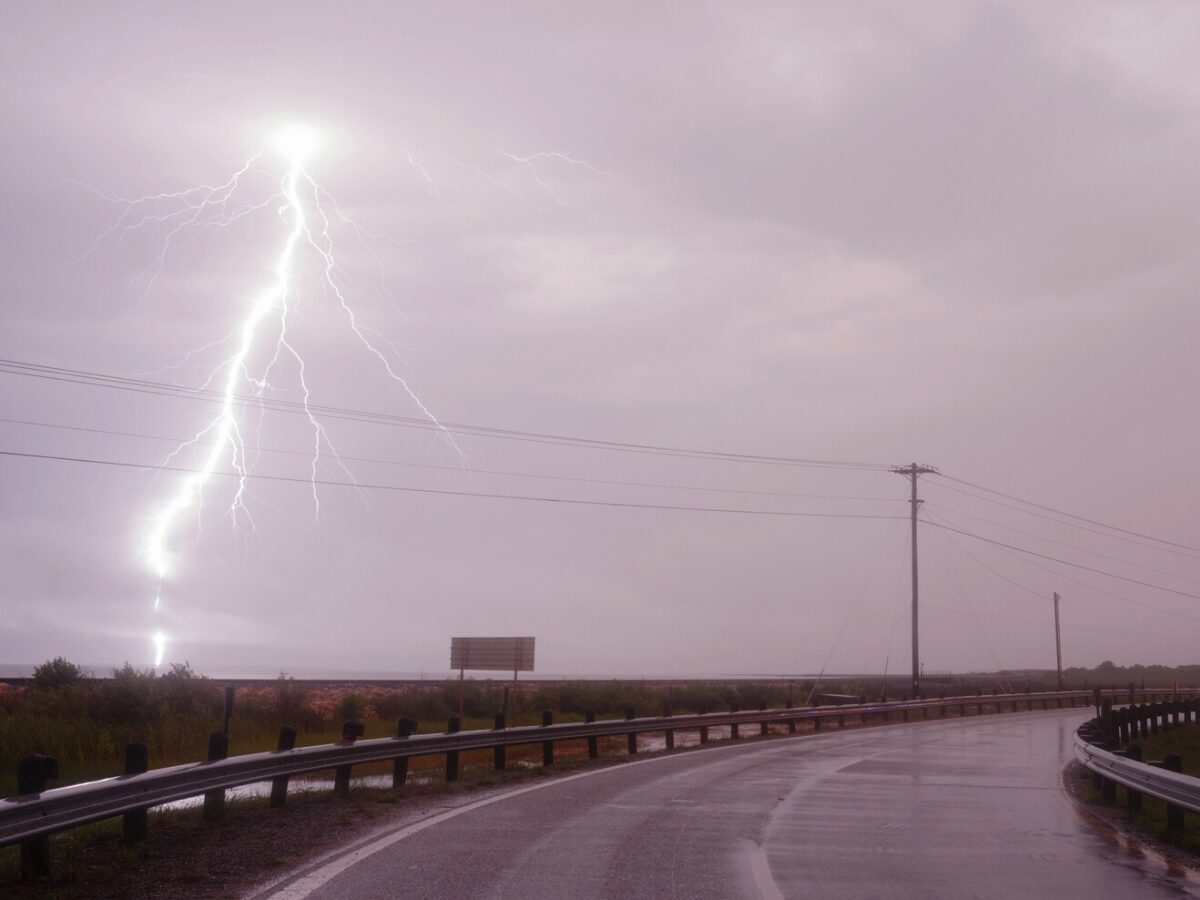Share the post "Texas Rainfall: Myths, Facts, and Patterns"
While Texas is known for being hot and sunny, rainfall varies as it’s the second-largest state. We’ll examine which parts of Texas get the most and least rainfall.
In Texas, the rainfall varies considerably across the state, from around 6 inches annually to 60 inches. The central zones of Texas are more intermediate, and the average rainfall across the state is 61 days a year. Most of the rain falls in spring and at the start of fall.

How Much Does It Rain In Texas?
Because Texas is so large, the climate can vary quite a bit. Suppose you prefer a more humid area with higher rainfall—you’ll likely be happier in the east of Texas, closer to the ocean. However, the dry plains in the far west of Texas may be too dry for your liking.
What Climate Does Texas Have?
Texas is a large state in the south of the U.S., with the south-eastern regions bordering the Gulf of Mexico, while the northwest is raised on a plateau.
Most of Texas experiences mild winters, but because the northwest is on a plateau, it has more severe winters. In summer, Texas can get very hot, especially in the lowland regions. Along the eastern coastal areas, humidity can get very high, and the air will feel muggy.
- The western part of Texas is the driest and receives the least rainfall.
- The eastern side of Texas gets much more rain and sometimes can get more than 47 inches of rain in a year.
- The central area of Texas gets an intermediate amount of rain. Depending on whether it is influenced by dry air from the east or wet masses from the west, it can be either rainy or dry. The average rainfall in the central belt is 29.5-33.5 inches annually.
How Many Days of Rain Does Texas Get?
Taking an average across all of Texas, the state gets 61 days of rain a year compared to the U.S. average of 106 days. As you can see from this, Texas is generally considered a sunny state.
What is The Rainiest Month in Texas?
Texas summers tend to be clear and dry, with most rain falling in spring and early fall. As the seasons change, Texas will get most of its rain.
You can expect rainy months in March, April, and May, and again as fall starts in September and October. Most rainy periods only last a few days, and rain showers are often over very quickly.
While there will be differences across Texas, for example, in Dallas, the rainiest months are May and October. Dallas in May gets around 4.9 inches of rain.

Which Part of Texas Gets The Most Rain?
The eastern regions of Texas will get the most rain. This area has a humid and subtropical climate. The region of Piney Woods, Texas, can get more than 60 inches of rain annually. Because it’s near the gulf currents, the sea air brings humid air from the ocean.
Rain in Eastern Texas
The eastern part of Texas covers about two-thirds of the land. Usually, it has a subtropical climate, but sometimes cold air will come down from the north. This part of Texas experiences what is termed Oceanic Climate.
Hurricanes and thunderstorms are dangerous in this coastal region, and the high humidity can make the hot air feel even muggier and more unpleasant.
Places like Galveston, Houston, Corpus Christi, Port Arthur, and Beaumont will get higher rainfall because of their proximity to the Gulf of Mexico.
Rain in Western Texas
Further to the west, Texas experiences mainly a hot semi-arid climate in the south and cold semi-arid towards the north.

Which is the Least Rainy Part of Texas?
Because Texas covers such a range of geographical areas, the rainfall varies quite a bit across the state. You can expect to find the driest regions in the more elevated areas along the north and west. The minimum state rainfall of 7.82 annual inches is in El Paso, located at the western tip of Texas.
The Climate in Western Texas
The far west of Texas gets mainly a hot-summer Mediterranean climate, but the very southwestern tip experiences a hot desert climate.
The driest part of Texas is the region known as Trans-Pecos, west of the Pecos River. It covers the area of Far West texas. It forms part of the largest desert in North America, the Chihuahuan Desert.
Which Part of Texas Gets the Most Rainstorms?
Texas often gets thunderstorms, most usually in the eastern and northern regions. It also experienced more tornadoes than the other states in the U.S. These hurricanes and storms occur most frequently in the eastern areas along the coast.
Hurricanes in Texas
- Most destructive hurricanes occur between the first of June and the thirtieth of November.
- The peak period for hurricanes is generally in September.
- Most of the damage occurs along the Texas coast.
- Hurricanes can sweep inland and cause flooding and destruction in the Texas interior.
Because of the horrific damage hurricanes can cause to people and property, the Texas government often sends out leaflets helping people in the affected areas to prepare for hurricane season.
Rain In Texas FAQs
Is There a Wet Season in Texas?
Thanks to the varied geographical areas in Texas, the wet season in Texas happens at different times in different areas. Central, North, and East Texas get the most rain in May, while the High Plains and Trans-Pecos get rain between May and October.
The wettest regions may get seven days of rain in January, compared to the driest, which may only get one day.
What is the Dry Season in Texas?
Winter is usually the driest time for all of Texas except for East Texas:
* On the High plains, December and January are the driest months
* On the coastal plains, March is the driest month
* In the Trans_Pecos region, March and April are the driest months.
References:
- Geography of Texas: gov.texas.gov
- Average rainfall in Texas: weather-and-climate.com
- Seasonal rain in Texas: en.wikipedia.org
Share the post "Texas Rainfall: Myths, Facts, and Patterns"
Christian Linden is a seasoned writer and contributor at Texas View, specializing in topics that resonate with the Texan community. With over a decade of experience in journalism, Christian brings a wealth of knowledge in local politics, culture, and lifestyle. He holds a Bachelor's degree in Communications from the University of Texas. When he's not writing, Christian enjoys spending weekends traveling across Texas with his family, exploring everything from bustling cities to serene landscapes.











